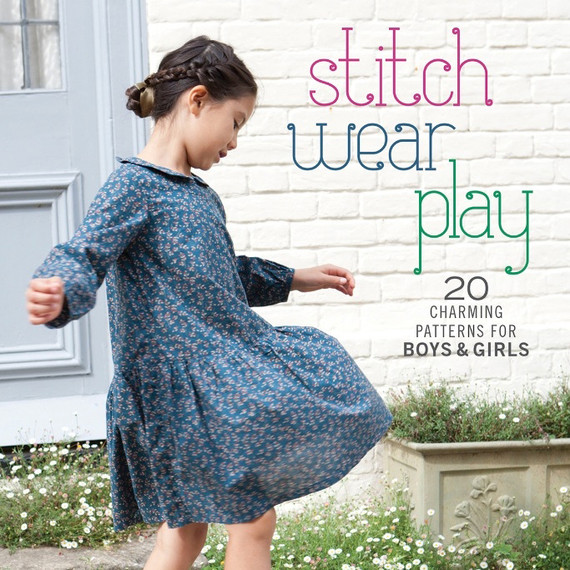

1. How did you first become interested in sewing?
I grew up in an environment with so much fabric at home because my mother used to sew. I was about 10 years old when I started sewing easy-to-make pieces such as small bags or dolls. I used to draw clothes that I wanted, then my mother and I would go to fabric shops choosing materials together and she’d make them for me. I have very warm memories about this. To share the same interest with her was a great thing. I never think that I am an artist, just a sewing lover!
2. Where do you find inspiration for patterns, like the ones featured in your book?
I start by making very simple and basic shapes and patterns, then, for different styles, I apply small changes, like adding some details or changing the design of the collar shapes a bit or adding pleats and so on. You can make innumerous designs in this way.
Based on this, I try to design simple-shaped, easy-to-make garments that even beginners can make, and then adding a little spice for originality in the book.
3. What tips do you have for making children’s clothing that are comfortable and fit correctly (in terms of fabric, technique, etc.)?
I use a lot of linen or cotton gauze for summer clothes because they are quicker to dry and gentle on the skin. I think about the practicality of the clothes: Is it easy to put them on and take off, are they comfortable to move around in? The armholes need to be deep enough and waistlines need to be flexible and not so tight especially for a girl’s dress.
As children grow so fast, try to make some patterns with very wide hem seams so that children can wear the items for some seasons as you can make the length of the item longer afterward. Also, I think about how the new pieces combine with other items already in your wardrobe.
4. Do you have a favorite project from the book?
I really like matching clothes for girls and boys. It is quite difficult to find nice clothing to do that in shops. I am happy with the matching girl’s and boy’s shirts and gingham boy’s shorts and side-button skirt, because those show you some ideas on how you can play around with the little details for boys’ and girls’ clothing. The skirt and shorts both have yokes using the fabric diagonally, the shirts have subtle different details at the back yoke line. The boy’s shirt has a pleated upper edge of the back but the girl’s shirt has a gathered upper edge of the back. I hope you get inspired by this and apply it when you make your own original children’s cloths.
These garments you can also enjoy styling with other items the children have in their wardrobe. They can wear the gingham skirt/trousers with just a plain white T-shirt, for example.
5. What essential sewing skills do you believe someone should learn? And why?
It would be useful to learn the following three techniques in order to make clothing for both children and adults: 1) Neck-facing, 2) Armhole-facing or -binding. 3) Center back-binding. As you improve on those techniques especially, you can make a variety of clothing. Personally, I use those techniques all the time.
The best way of improving your sewing skills is by making small things, such as a little bag or a place mat combining different types of fabric. Then you will learn techniques by yourself, through the experience. Also by looking at good-quality work in other pieces, you can turn them inside-out and look how it has been made. That makes me learn skills as well. Sometimes, this is my excuse to buy a new dress for myself!
I used to work for a costume company and through sewing I learned so much about the difference between many different types of fabric such as organza, jersey, very fine fabric, thick, and heavy, etc. So practice is really what gives me the confidence to work even with fabrics that are very difficult to sew.
SOURCE:http://www.marthastewart.com/1112959/sewing-kids-clothes-5-questions-mariko-nakamura